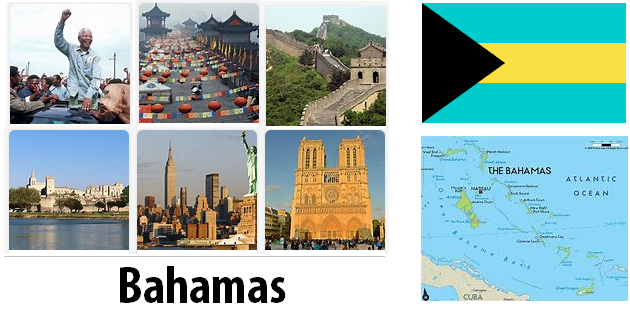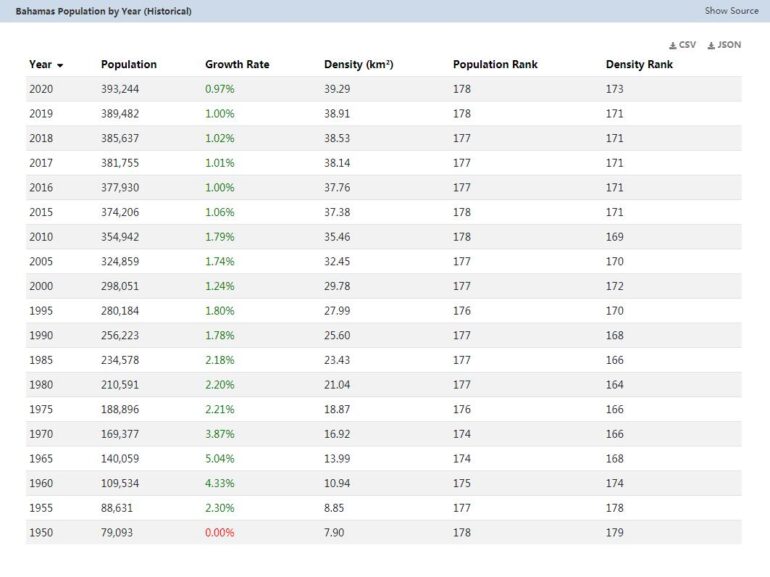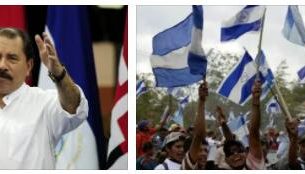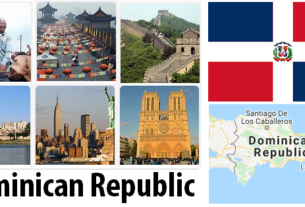The Bahama islands were discovered by Christopher Columbus in 1492 but the identity of the island where he landed and which was called “Guanahani” is still uncertain. In his expedition Columbus was helped by King Ferdinand the Catholic who in 1509 ordered him to take all the inhabitants away from the islands to occupy them elsewhere, thus favoring the subsequent explorations, after 1512, of Ponce de Leon and Perez of Ortubia.
The best known of these islands are: Grande Bahama, Grande Abaco, New Providence with the capital Nassau, Cat Island, Eleuthera, Grande Exuma, Acklin, Caicos islands, Watling, Grande Inagua. See Countryaah for population and country facts about Bahamas.
In 1629 the British occupied New Providence and remained there until 1644 when they were driven out by the Spaniards who in 1646 occupied and colonized Eleuthera as well. The British then took the colonists from Bermuda and with them returned to New Providence and with the only existing port, that of Nassau, they were able to secure their traffics and trade.
Then in 1670 Charles II of England granted the Bahamas to a group of lords who, however, had to fight for the rights acquired in the territories both with Spain and with the Buccaneers. They were the latter of the European adventurers who had settled in the Antilles in the second half of the 16th century. They first lived in the area peacefully hunting buffalo and wild boar. and salting the meat they sold, then, with the name of “Bucan”, from which their name derived. But harassed by tyrannical Spanish laws, they reacted by joining in pirate associations governed by very strict rules and with the names of “Fratelli della Costa” and “Filibustieri” they traveled along the seas especially to the detriment of the Spaniards.
The filibustieri, especially in the seventeenth century infested the seas to the detriment of the Spaniards, commanded by intrepid and unscrupulous leaders who conquered and damaged many cities, even if well fortified.
In 1718 England sent a governor accompanied by many colonists who, having settled definitively, immediately began the cultivation and planting of fruit trees.
Later other settlers arrived bringing slaves with them and then, together with agriculture, cotton plantations also progressed.
After a short period of occupation by the United States and then by Spain, the British returned to the islands recognized by the Crown as legitimate property.
At the end of the eighteenth century, however, agriculture and cotton suffered a serious setback due to a rampant plant disease.
The commercial traffic for a while was good especially by virtue of the production of salt, but the abolition of slavery in 1834 and the administrative division of the Caicos and Turks islands, major producers of salt, gave another blow to the Bahamas which then the events related to the SU followed. In fact, in these islands, during the American Secession War, all those who managed to violate the blockade established by the Northerners found refuge, bringing trade to very high levels. After the war, and then ended the trade, the drought and other misfortunes damaged the islands. Then, however, the demand for fruit and agricultural products increased by the US, the crops were encouraged, especially those of tomatoes and agave, and fishing also had a significant boost especially that of sponges, certainly the first resource of the islands. The timber industry also developed a lot, the production of wines and alcohol which in large quantities began to enter the US illegally.
The ports were expanded and many public works were undertaken.
The state, headed by a governor, had an executive council and an elective assembly.
In the first elections, only landowners and occupants were entitled to vote. Above the Assembly there was a Legislative Council whose members were appointed by the Crown.




